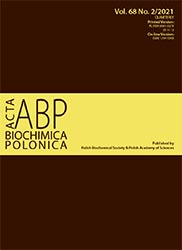Analysis of the complete mitochondrial genome sequence of the resurrection plant Haberlea rhodopensis
Abstract
Haberlea rhodopensis is a paleolithic tertiary relict species that belongs to the unique group of resurrection plants sharing remarkable tolerance to desiccation. When exposed to severe drought stress, this species shows an ability to maintain structural integrity of its deactivated photosynthetic apparatus, which easily reactivates upon rehydration. In addition to its homoiochlorophyllous nature, the resurrection capability of H. rhodopensis is of particular importance to the global climate change mitigation. In this study, we sequenced, assembled, and analyzed the mitochondrial (mt) genome of H. rhodopensis for the first time. The master circle has a typical circular structure of 484 138 bp in length with a 44.1% GC content in total. The mt genome of H. rhodopensis contains 59 genes in total, including 35 protein-coding, 21 tRNAs, and 3 rRNAs genes. 7 tandem repeats and 85 simple sequence repeats (SSRs) are distributed throughout the mt genome. The alignment of 20 plant mt genomes confirms the phylogenetic position of H. rhodopensis in the Lamiales order. Our comprehensive analysis of the complete mt genome of H. rhodopensis is a significant addition to the limited database of organelle genomes of resurrection species. Comparative and phylogenetic analysis provides valuable information for a better understanding of mitochondrial molecular evolution in plants.
Acta Biochimica Polonica is an OpenAccess quarterly and publishes four issues a year. All contents are distributed under the Creative Commons Attribution-ShareAlike 4.0 International (CC BY 4.0) license. Everybody may use the content following terms: Attribution — You must give appropriate credit, provide a link to the license, and indicate if changes were made. You may do so in any reasonable manner, but not in any way that suggests the licensor endorses you or your use.
Copyright for all published papers © stays with the authors.
Copyright for the journal: © Polish Biochemical Society.


